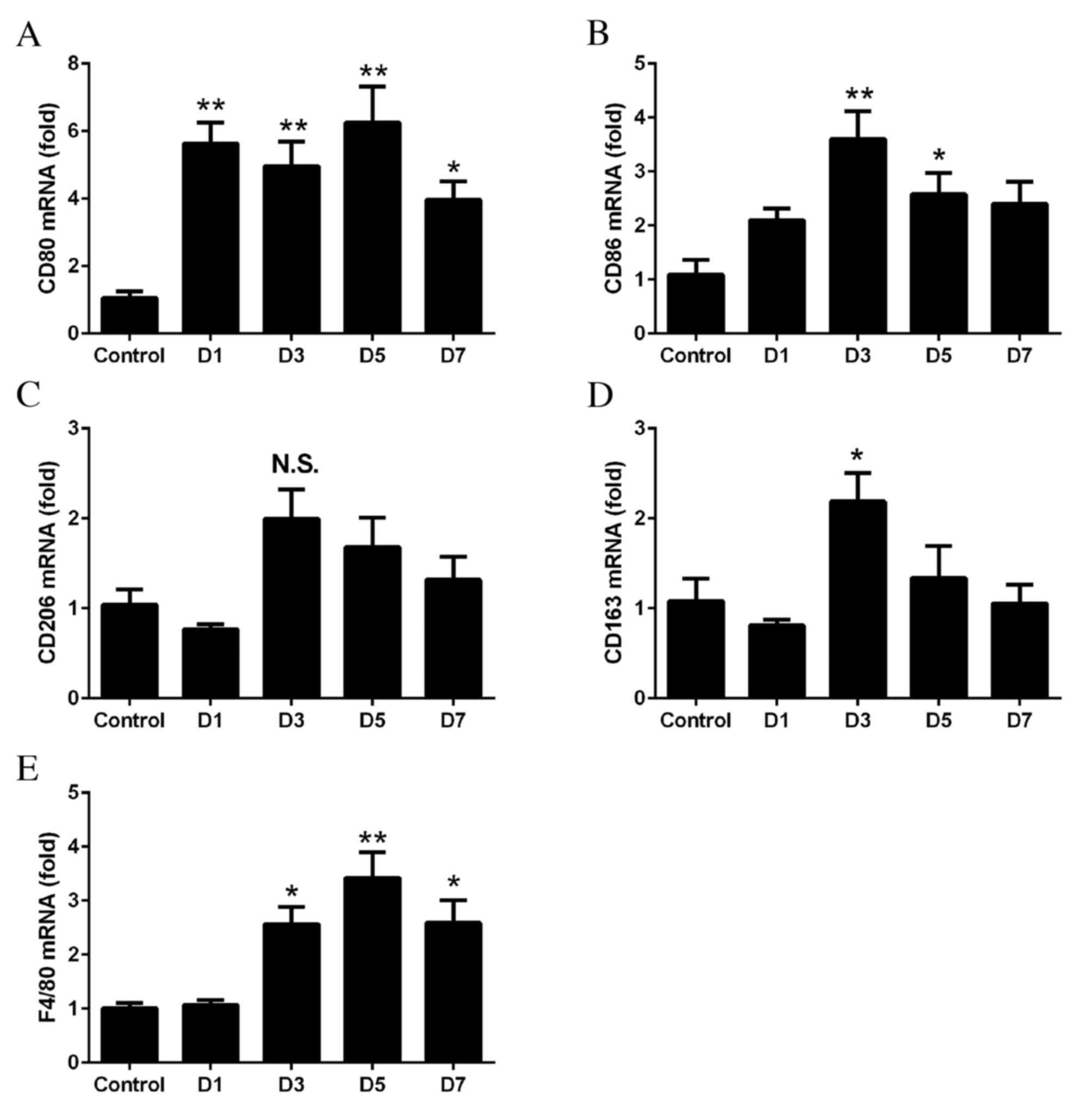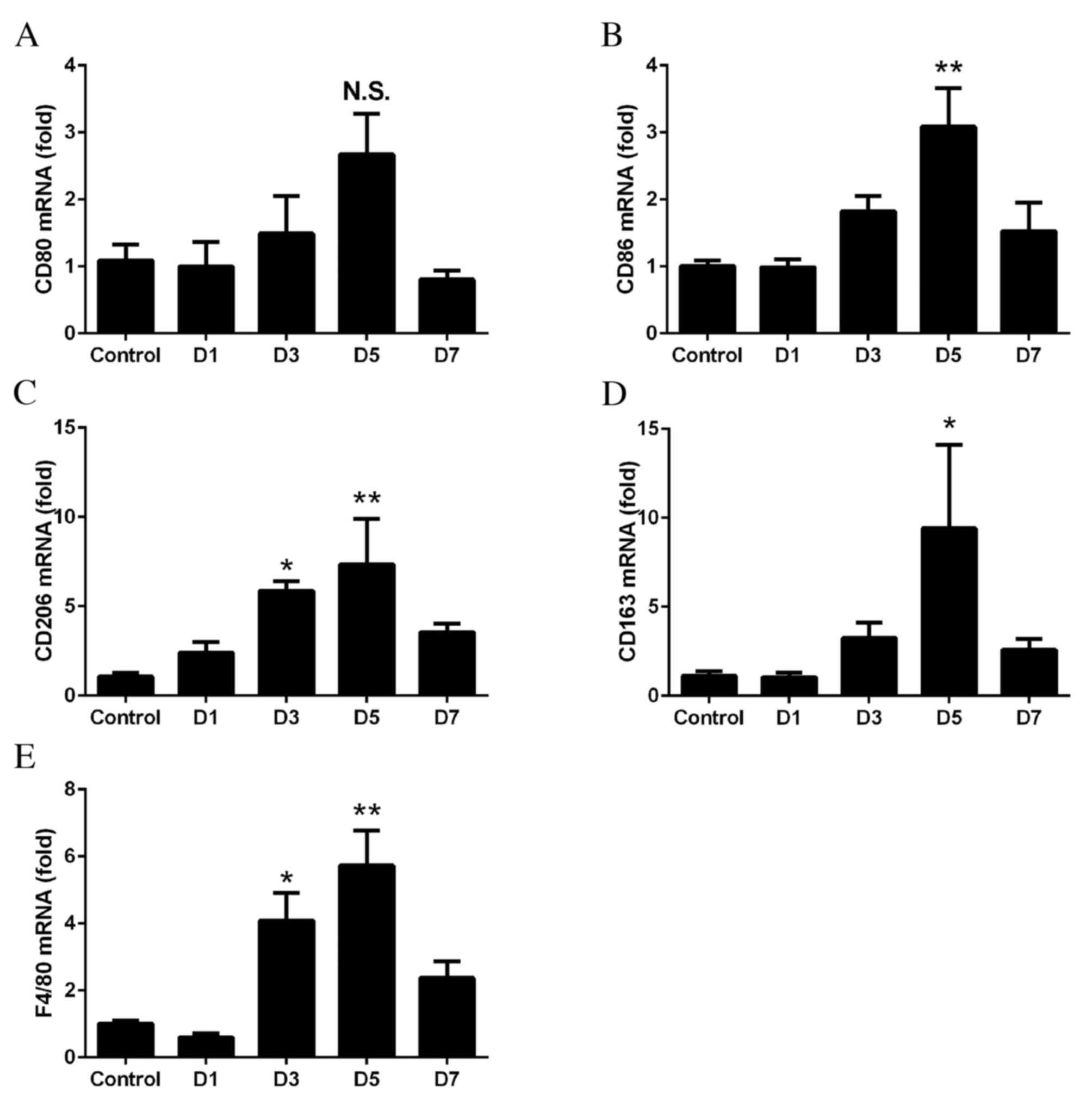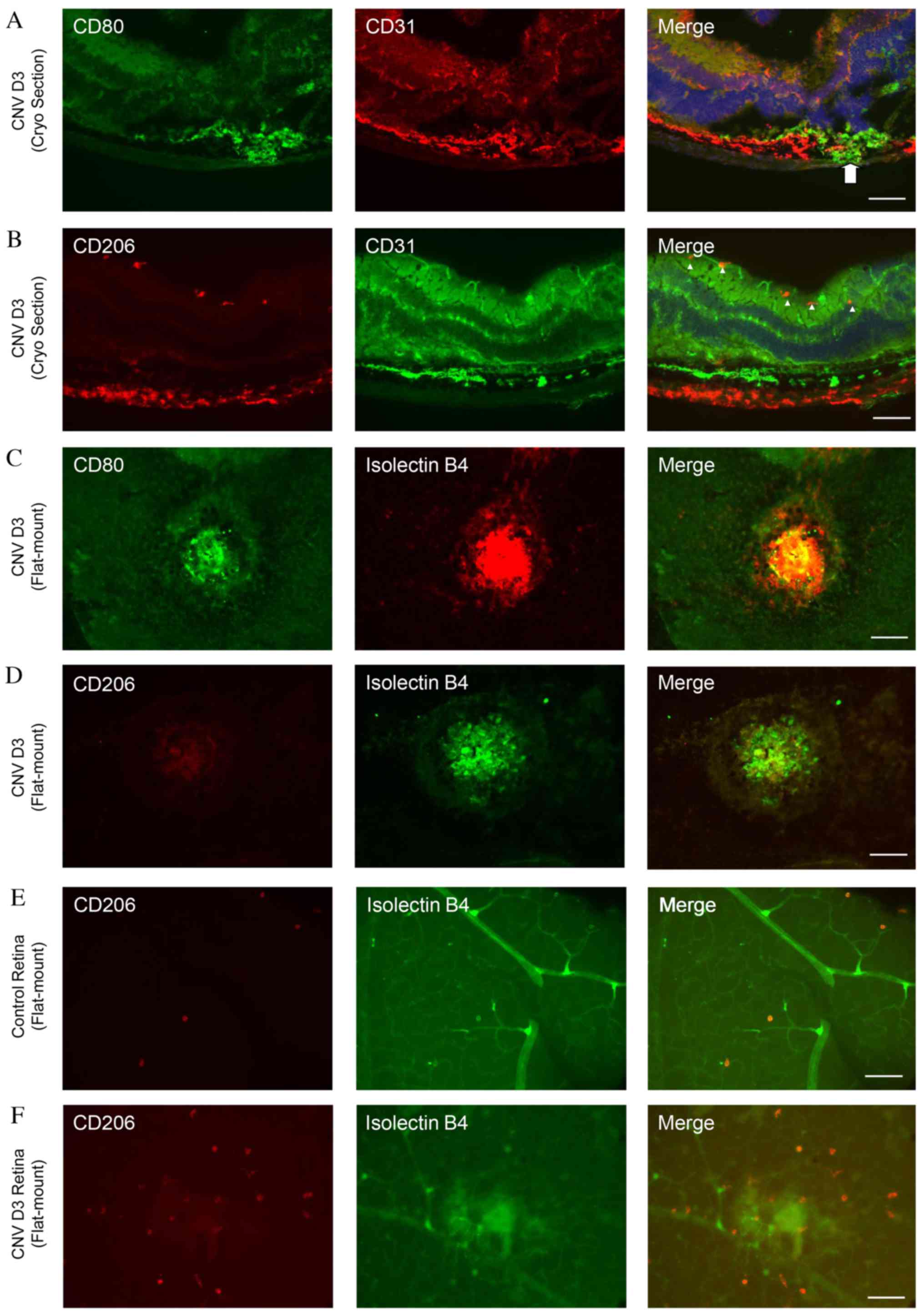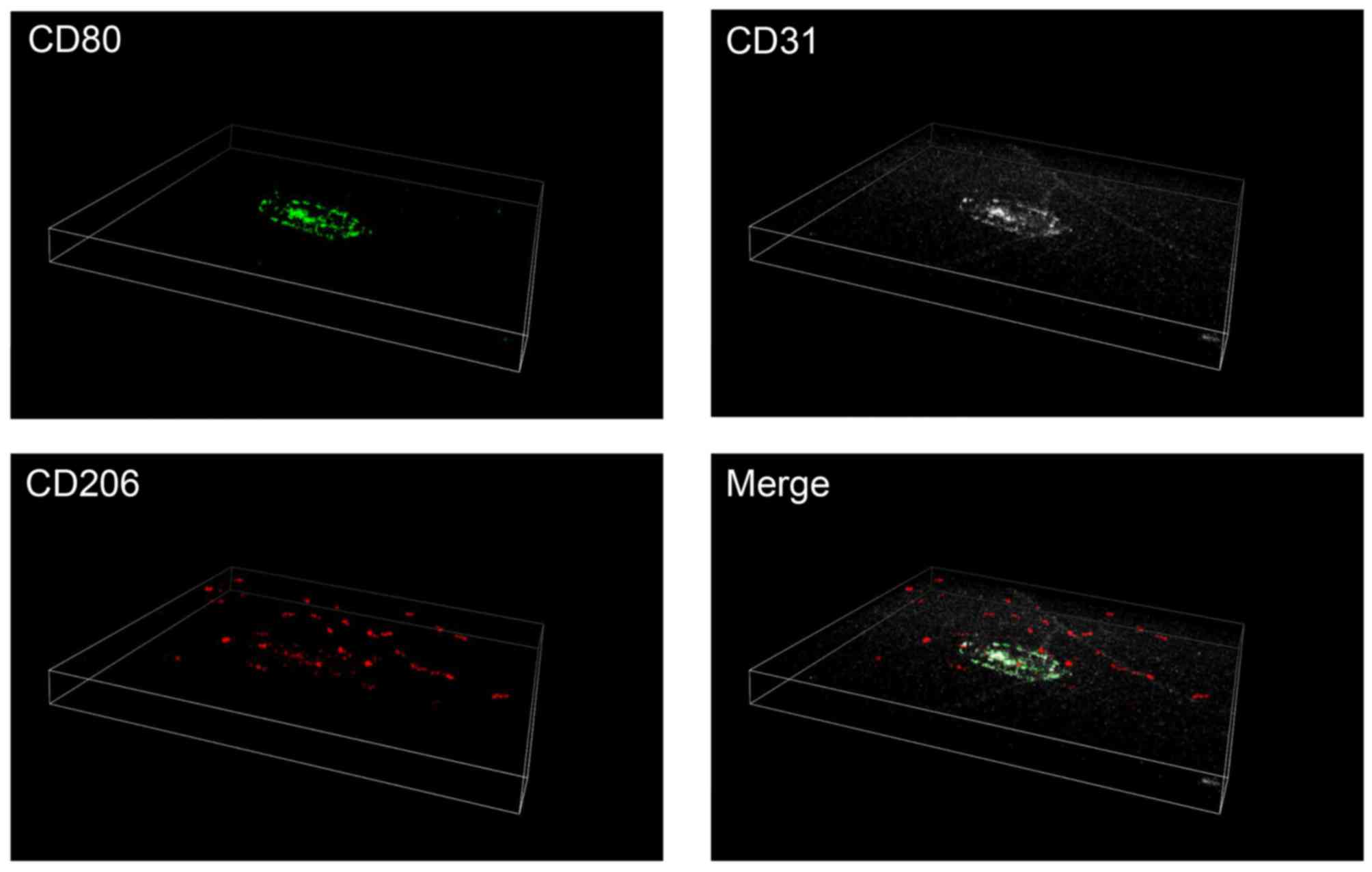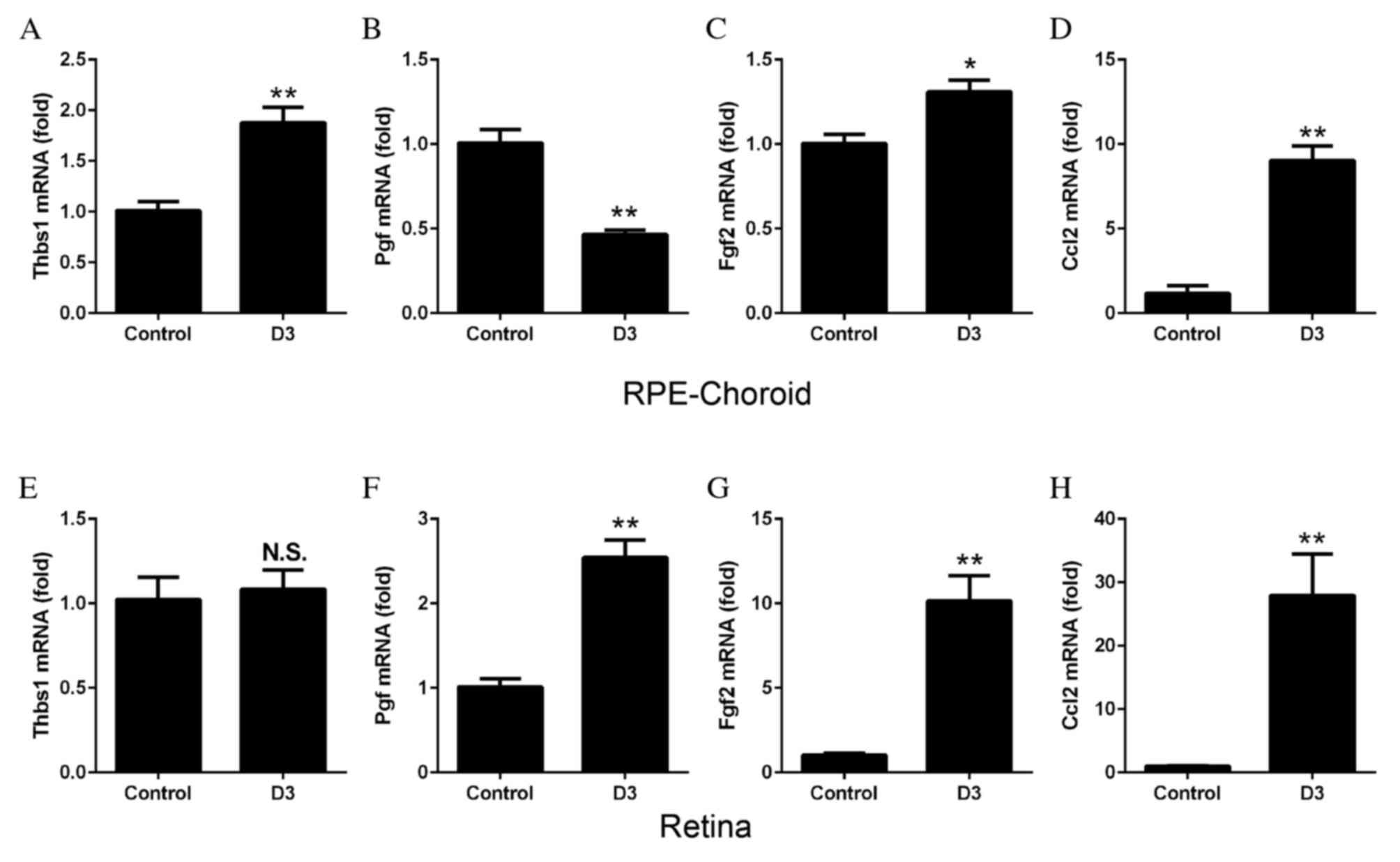|
1
|
Klein R, Peto T, Bird A and Vannewkirk MR:
The epidemiology of agerelated macular degeneration. Am J
Ophthalmol. 137:4864952004. View Article : Google Scholar
|
|
2
|
Wong IY, Koo SC and Chan CW: Prevention of
agerelated macular degeneration. Int Ophthalmol. 31:73822011.
View Article : Google Scholar
|
|
3
|
Ambati J, Ambati BK, Yoo SH, Ianchulev S
and Adamis AP: Agerelated macular degeneration: Etiology,
pathogenesis, and therapeutic strategies. Surv Ophthalmol.
48:2572932003. View Article : Google Scholar
|
|
4
|
Lambert V, Lecomte J, Hansen S, Blacher S,
Gonzalez ML, Struman I, Sounni NE, Rozet E, de Tullio P, Foidart
JM, et al: Laser-induced choroidal neovascularization model to
study age-related macular degeneration in mice. Nat Protoc.
8:2197–2211. 2013. View Article : Google Scholar
|
|
5
|
Heidmann DG Espinosa, Suner IJ, Hernandez
EP, Monroy D, Csaky KG and Cousins SW: Macrophage depletion
diminishes lesion size and severity in experimental choroidal
neovascularization. Invest Ophthalmol Vis Sci. 44:358635922003.
|
|
6
|
Sakurai E, Anand A, Ambati BK, van Rooijen
N and Ambati J: Macrophage depletion inhibits experimental
choroidal neovascularization. Invest Ophthalmol Vis Sci.
44:357835852003. View Article : Google Scholar
|
|
7
|
Caicedo A, Heidmann DG Espinosa, Pina Y,
Hernandez EP and Cousins SW: Bloodderived macrophages infiltrate
the retina and activate Muller glial cells under experimental
choroidal neovascularization. Exp Eye Res. 81:38472005. View Article : Google Scholar
|
|
8
|
Mantovani A, Sica A, Sozzani S, Allavena
P, Vecchi A and Locati M: The chemokine system in diverse forms of
macrophage activation and polarization. Trends Immunol.
25:6776862004. View Article : Google Scholar
|
|
9
|
Martinez FO, Sica A, Mantovani A and
Locati M: Macrophage activation and polarization. Front Biosci.
13:4534612008. View
Article : Google Scholar
|
|
10
|
Delavary B Mahdavian, van der Veer WM, Van
Egmond M, Niessen FB and Beelen RHJ: Macrophages in skin injury and
repair. Immunobiology. 216:753–762. 2011. View Article : Google Scholar
|
|
11
|
Gordon S and Martinez FO: Alternative
activation of macrophages: Mechanism and functions. Immunity.
32:5936042010. View Article : Google Scholar
|
|
12
|
Mantovani A, Schioppa T, Porta C, Allavena
P and Sica A: Role of tumorassociated macrophages in tumor
progression and invasion. Cancer Metastasis Rev. 25:3153222006.
View Article : Google Scholar
|
|
13
|
Ho VW and Sly LM: Derivation and
characterization of murine alternatively activated (M2)
macrophages. Methods Mol Biol. 531:1731852009.
|
|
14
|
Jetten N, Verbruggen S, Gijbels MJ, Post
MJ, De Winther MP and Donners MM: Antiinflammatory M2, but not
proinflammatory M1 macrophages promote angiogenesis in vivo.
Angiogenesis. 17:1091182014. View Article : Google Scholar
|
|
15
|
Cao X, Shen D, Patel MM, Tuo J, Johnson
TM, Olsen TW and Chan CC: Macrophage polarization in the maculae of
age-related macular degeneration: A pilot study. Pathol Int.
61:528–535. 2011. View Article : Google Scholar :
|
|
16
|
Zhou Y, Yoshida S, Nakao S, Yoshimura T,
Kobayashi Y, Nakama T, Kubo Y, Miyawaki K, Yamaguchi M, Ishikawa K,
et al: M2 macrophages enhance pathological neovascularization in
the mouse model of oxygen-induced retinopathy. Invest Ophthalmol
Vis Sci. 56:4767–4777. 2015. View Article : Google Scholar
|
|
17
|
Zandi S, Nakao S, Chun KH, Fiorina P, Sun
D, Arita R, Zhao M, Kim E, Schueller O, Campbell S, et al:
ROCK-isoform-specific polarization of macrophages associated with
age-related macular degeneration. Cell Rep. 10:1173–1186. 2015.
View Article : Google Scholar :
|
|
18
|
Zhang H, Yang Y, Takeda A, Yoshimura T,
Oshima Y, Sonoda KH and Ishibashi T: A novel platelet-activating
factor receptor antagonist inhibits choroidal neovascularization
and subretinal fibrosis. PLoS One. 8:e681732013. View Article : Google Scholar :
|
|
19
|
Nakama T, Yoshida S, Ishikawa K, Kobayashi
Y, Zhou Y, Nakao S, Sassa Y, Oshima Y, Takao K, Shimahara A, et al:
Inhibition of choroidal fibrovascular membrane formation by new
class of RNA interference therapeutic agent targeting periostin.
Gene Ther. 22:127–137. 2015. View Article : Google Scholar
|
|
20
|
Ishikawa K, Yoshida S, Kadota K, Nakamura
T, Niiro H, Arakawa S, Yoshida A, Akashi K and Ishibashi T: Gene
expression profile of hyperoxic and hypoxic retinas in a mouse
model of oxygen-induced retinopathy. Invest Ophthalmol Vis Sci.
51:4307–4319. 2010. View Article : Google Scholar
|
|
21
|
Li W, Katz BP and Spinola SM: Haemophilus
ducreyiinduced interleukin10 promotes a mixed M1 and M2 activation
program in human macrophages. Infect Immun. 80:442644342012.
View Article : Google Scholar
|
|
22
|
Stein M, Keshav S, Harris N and Gordon S:
Interleukin 4 potently enhances murine macrophage mannose receptor
activity: A marker of alternative immunologic macrophage
activation. J Exp Med. 176:2872921992. View Article : Google Scholar
|
|
23
|
Bouhlel MA, Derudas B, Rigamonti E,
Dièvart R, Brozek J, Haulon S, Zawadzki C, Jude B, Torpier G, Marx
N, et al: PPARgamma activation primes human monocytes into
alternative M2 macrophages with anti-inflammatory properties. Cell
Metab. 6:137–143. 2007. View Article : Google Scholar
|
|
24
|
Livak KJ and Schmittgen TD: Analysis of
relative gene expression data using realtime quantitative PCR and
the 2(Delta Delta C(T)) Method. Methods. 25:4024082001. View Article : Google Scholar
|
|
25
|
Ishikawa K, Yoshida S, Nakao S, Sassa Y,
Asato R, Kohno R, Arima M, Kita T, Yoshida A, Ohuchida K and
Ishibashi T: Bone marrow-derived monocyte lineage cells recruited
by MIP-1β promote physiological revascularization in mouse model of
oxygen-induced retinopathy. Lab Invest. 92:91–101. 2012. View Article : Google Scholar
|
|
26
|
Arima M, Yoshida S, Nakama T, Ishikawa K,
Nakao S, Yoshimura T, Asato R, Sassa Y, Kita T, Enaida H, et al:
Involvement of periostin in regression of hyaloidvascular system
during ocular development. Invest Ophthalmol Vis Sci. 53:6495–6503.
2012. View Article : Google Scholar
|
|
27
|
Ishikawa K, Yoshida S, Nakao S, Nakama T,
Kita T, Asato R, Sassa Y, Arita R, Miyazaki M, Enaida H, et al:
Periostin promotes the generation of fibrous membranes in
proliferative vitreoretinopathy. FASEB J. 28:131–142. 2014.
View Article : Google Scholar
|
|
28
|
Kazerounian S, Yee KO and Lawler J:
Thrombospondins in cancer. Cell Mol Life Sci. 65:7007122008.
View Article : Google Scholar
|
|
29
|
Combadiére C, Feumi C, Raoul W, Keller N,
Rodéro M, Pézard A, Lavalette S, Houssier M, Jonet L, Picard E, et
al: CX3CR1-dependent subretinal microglia cell accumulation is
associated with cardinal features of age-related macular
degeneration. J Clin Invest. 117:2920–2928. 2007. View Article : Google Scholar :
|
|
30
|
Ma W, Zhao L, Fontainhas AM, Fariss RN and
Wong WT: Microglia in the mouse retina alter the structure and
function of retinal pigmented epithelial cells: A potential
cellular interaction relevant to AMD. PLoS One. 4:e79452009.
View Article : Google Scholar :
|
|
31
|
Huang H, Parlier R, Shen JK, Lutty GA and
Vinores SA: VEGF receptor blockade markedly reduces retinal
microglia/macrophage infiltration into laserinduced CNV. PLoS One.
8:e718082013. View Article : Google Scholar :
|
|
32
|
Albert DM, Neekhra A, Wang S, Darjatmoko
SR, Sorenson CM, Dubielzig RR and Sheibani N: Development of
choroidal neovascularization in rats with advanced intense cyclic
light-induced retinal degeneration. Arch Ophthalmol. 128:212–222.
2010. View Article : Google Scholar :
|
|
33
|
Auffray C, Fogg DK, Narni-Mancinelli E,
Senechal B, Trouillet C, Saederup N, Leemput J, Bigot K, Campisi L,
Abitbol M, et al: CX3CR1+ CD115+ CD135+ common macrophage/DC
precursors and the role of CX3CR1 in their response to
inflammation. J Exp Med. 206:595–606. 2009. View Article : Google Scholar :
|
|
34
|
Nahrendorf M, Swirski FK, Aikawa E,
Stangenberg L, Wurdinger T, Figueiredo JL, Libby P, Weissleder R
and Pittet MJ: The healing myocardium sequentially mobilizes two
monocyte subsets with divergent and complementary functions. J Exp
Med. 204:3037–3047. 2007. View Article : Google Scholar :
|
|
35
|
Benakis C, Bonilla L Garcia, Iadecola C
and Anrather J: The role of microglia and myeloid immune cells in
acute cerebral ischemia. Front Cell Neurosci. 8:4612015. View Article : Google Scholar :
|















